15 surprising facts about the world's most visited volcanoes
Dangerous beauties
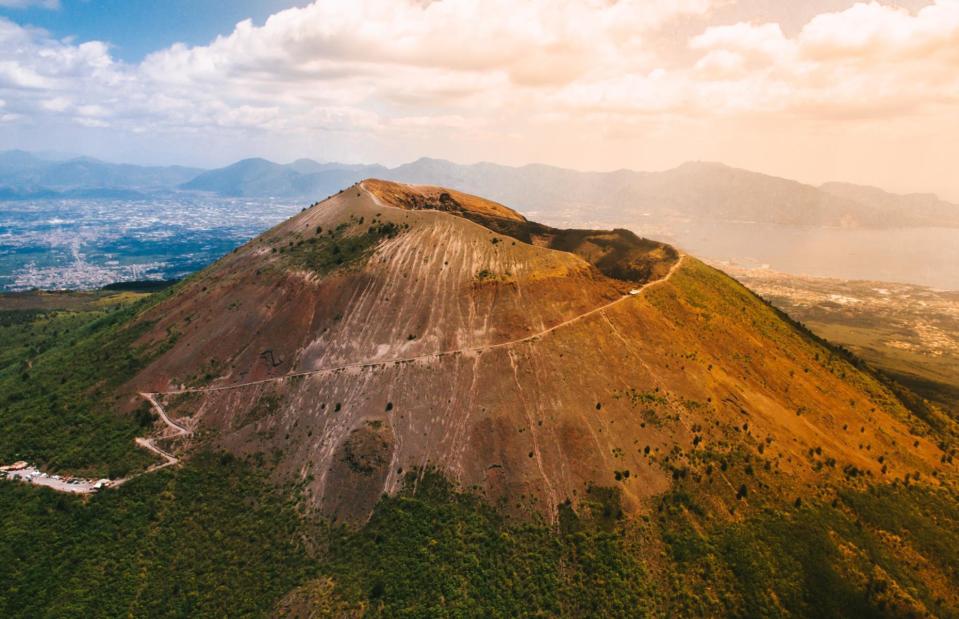
Versta/Shutterstock
Equal parts terrifying and beautiful, volcanoes represent the sheer power of nature. Some, like Sicily’s Mount Etna, are known for their frequent bursts of activity, while others have lain dormant for years and, in some cases, millennia. From calderas surrounded by glaciers and ice fields to the world’s tallest freestanding mountain, Kilimanjaro, these are the world’s most famous volcanoes – many of which you can visit.
Eyjafjallajökull, Iceland
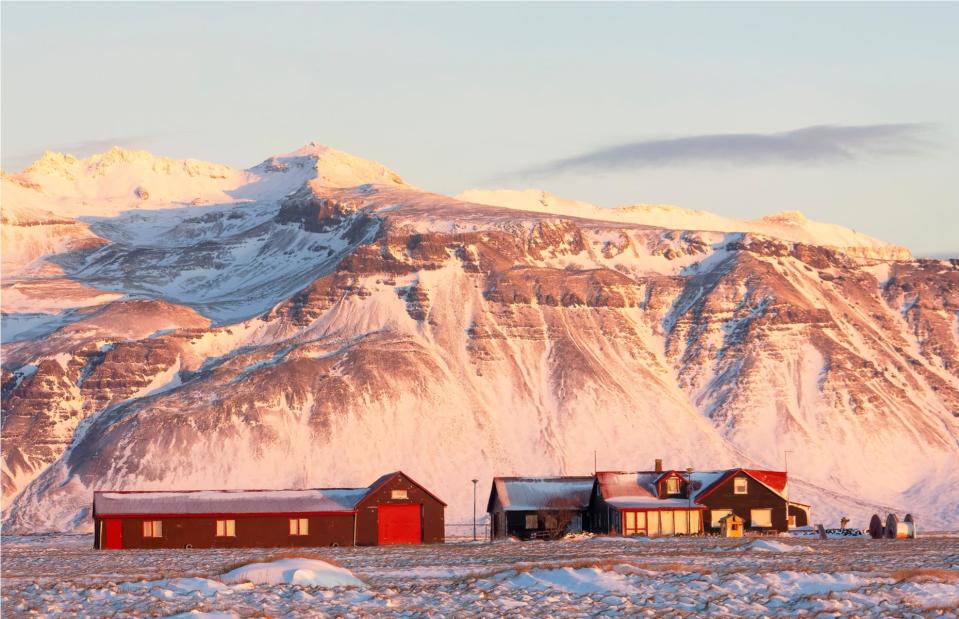
Marc Stephan/Shutterstock
This rather tricky to pronounce volcano, in the south of the island, is particularly spectacular as it lies beneath a glacier of the same name. Eyjafjallajökull means ‘the island’s mountain glacier’ and, at its highest point, reaches 5,466 feet (1,666m) above sea level. It’s erupted at fairly regular intervals throughout history, including in AD 920, 1612 or 1613 and 1821-23.
Eyjafjallajökull, Iceland
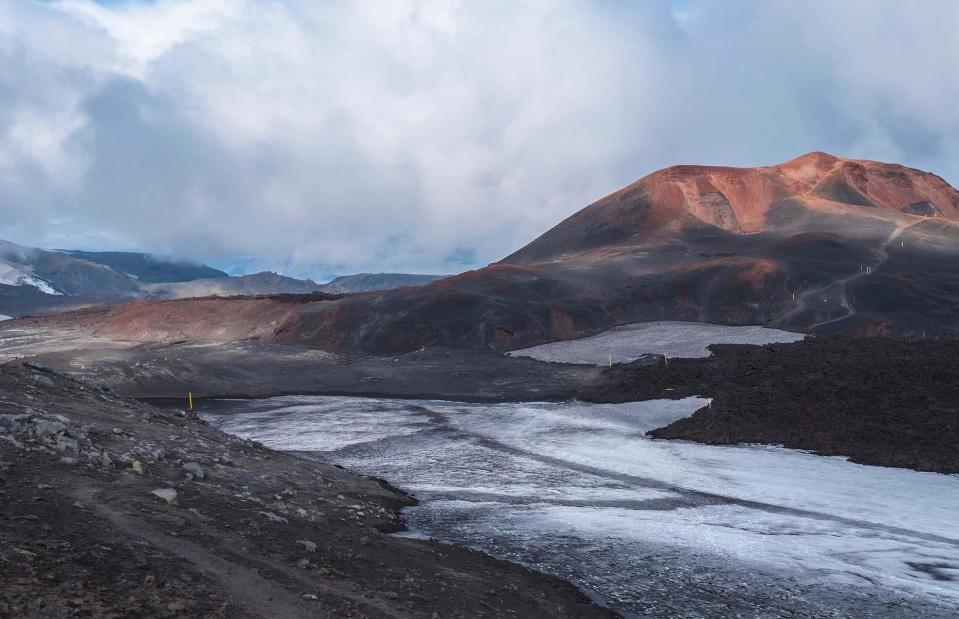
Kristyna Henkeova/Shutterstock
Eyjafjallajökull hit news headlines around the world in the first half of 2010 when a series of eruptions caused huge ash clouds that brought air traffic in Europe to a standstill. Although it’s too dangerous to walk on the ice cap that covers the caldera of the volcano, hikers can explore the rocky terrain on the 15-mile (25km) Fimmvörðuháls ridge hike. Snaking between the Eyjafjallajökull and Mýrdalsjökull glaciers, craters and lava flow formed by the 2010 eruption, it's equally intimidating and gorgeous.
Mount Vesuvius, Italy
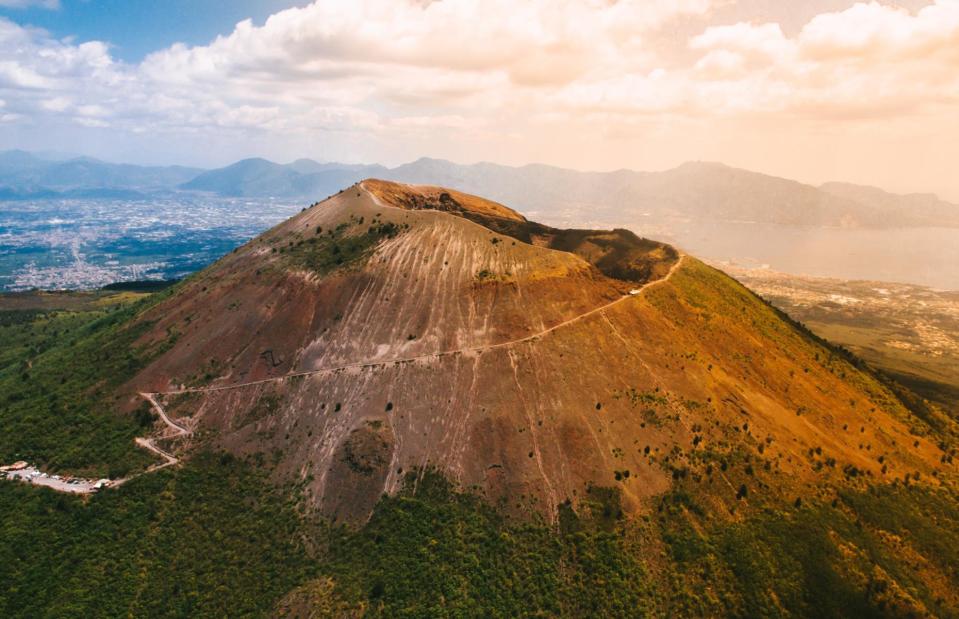
Versta/Shutterstock
The cone of Mount Vesuvius – Vesuvio in Italian – looms large over the city of Naples in southern Italy, with more than two million people living in its vicinity and on its lower slopes, where vineyards and orchards thrive because of the volcanic soil. The vast crater at its summit was formed during the last eruption in 1944, and today it’s not a question of if the volcano will erupt again, but when.
Mount Vesuvius, Italy
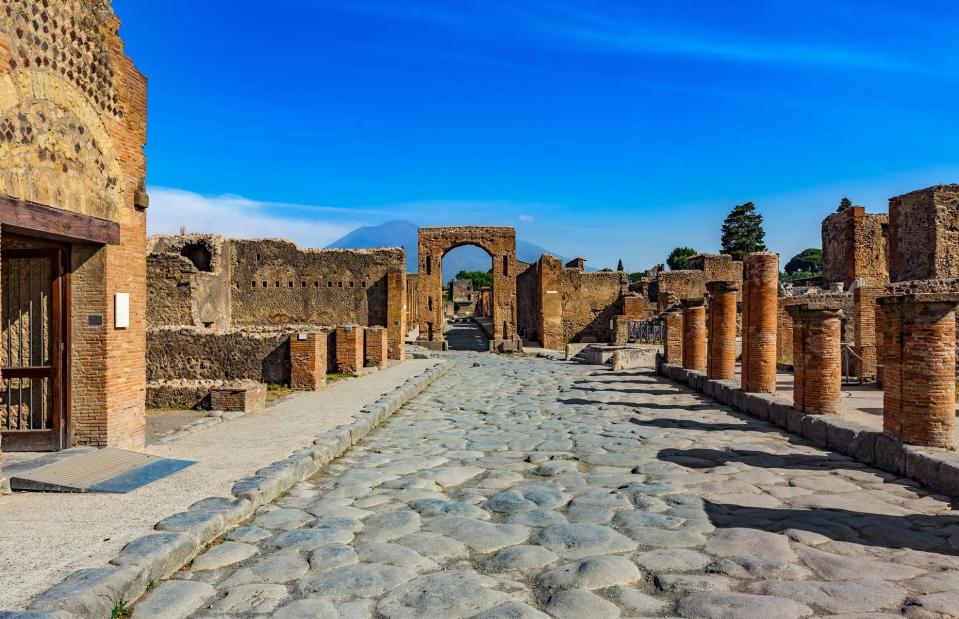
WitR/Shutterstock
The impact of the volcano is preserved in what’s perhaps the world’s most famous archaeological site, Pompeii. The once-prosperous Roman city, located at the southeastern base of Mount Vesuvius, was devastated by an eruption in AD 79 that rained down ash and volcanic rock. When the city was rediscovered nearly 2,000 years later everything, from buildings to plates of food, had been perfectly preserved. Pompeii can be visited for tours, as can the volcano’s crater.
Mount Fuji, Japan
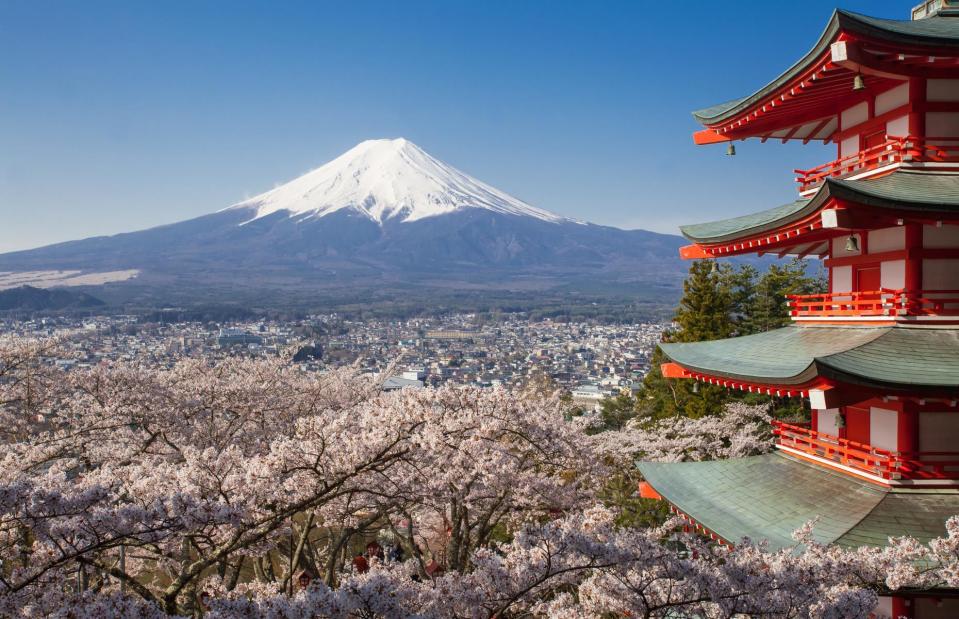
Sakarin Sawasdinaka/Shutterstock
Around 60 miles (97km) from Tokyo, Mount Fuji is Japan’s most iconic peak and some would say that its symmetrical snow-capped beauty is best appreciated from afar. It’s particularly pretty seen from Lake Ashi in Hakone or the city of Fujiyoshida, where the peak can be viewed from Chureito Pagoda. Fuji-san, as it’s known locally, is long overdue an eruption as the last time it happened was 1707.
Mount Fuji, Japan
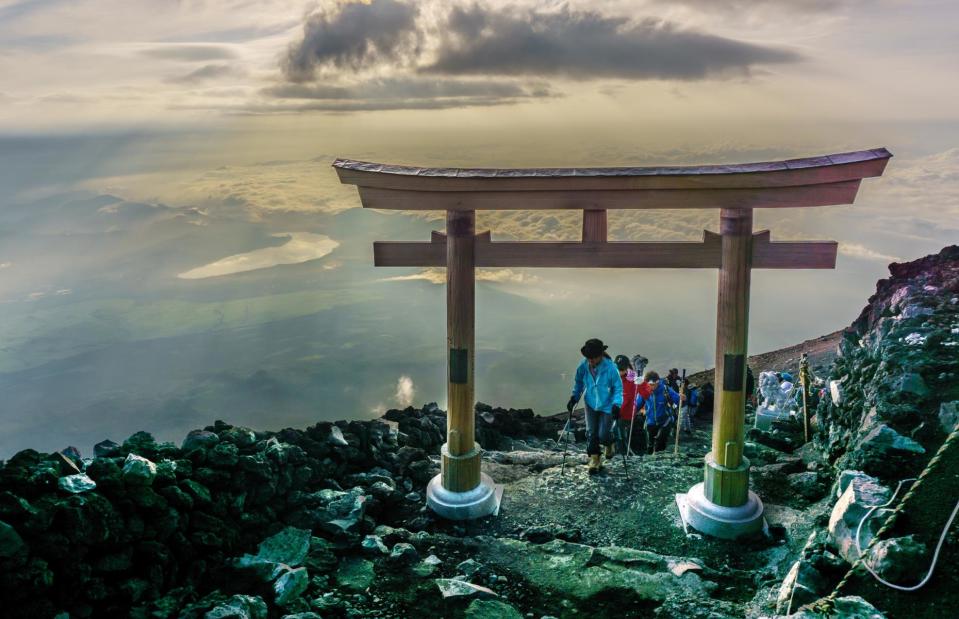
MADSOLAR/Shutterstock
Fuji is also the tallest peak in Japan at 12,388 feet (3,776m) and is considered one of the country’s three sacred mountains, with pilgrims following its trails for centuries. The official climbing season runs from July to mid-September, when the weather is relatively mild and people can follow trails to the summit, staying at one of the many mountain huts along the route. Japan’s official tourism website has a guide to visiting Fuji, including information on where to stay and when to go.
Taal Volcano, Philippines
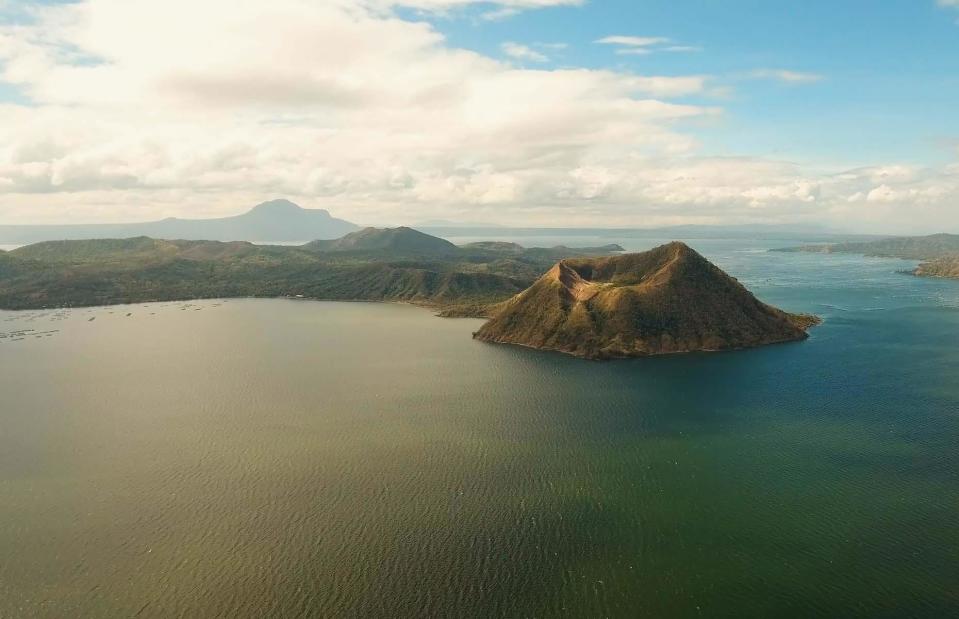
Alexpunker/Shutterstock
The world’s smallest active volcano is famous for sitting in a lake within a volcano – the water-filled caldera was formed during a previous eruption. The still green water belies the fact that it’s a volatile area. Taal is the country's second most active volcano and its most recent big eruption in March 2022 spewed ashes over Calabarzon, Metro Manila and some parts of Central Luzon and Ilocos Region. This resulted in the suspension of school, work and flights in the area.
Taal Volcano, Philippines
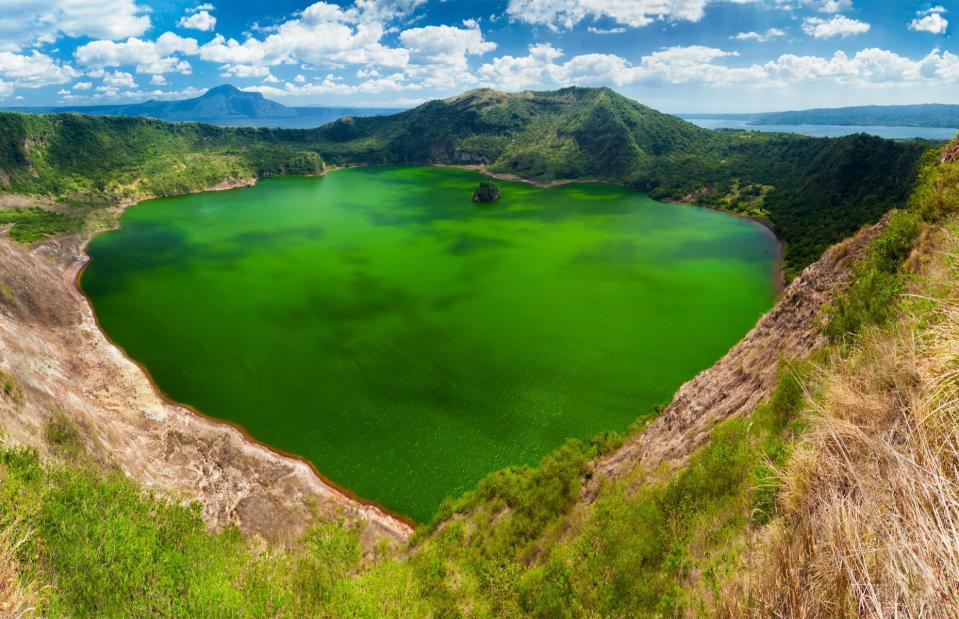
saiko3p/Shutterstock
It’s part of Volcano Island on Lake Taal and is one of 47 craters there, with further vents and eruption points lurking beneath the water. Previously, outrigger canoes would ferry passengers from Talisay to Volcano Island, where they could follow dusty trails to the crater lake. However, since the previous eruption in 2020, visiting the volcano is strictly prohibited.
Cotopaxi, Ecuador
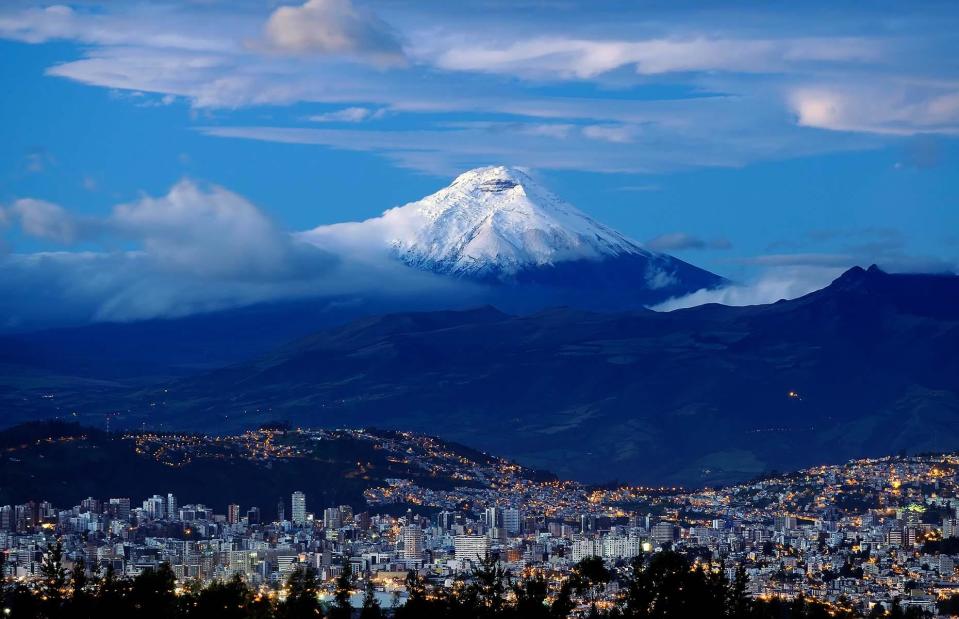
Fabricio Burbano/Shutterstock
Cotopaxi is one of the world’s tallest active volcanoes, reaching a height of 19,393 feet (5,911m). It’s famed for its near-symmetrical, snow-capped beauty and also for being an active and dangerous volcano with several major eruptions between 1744-1904. It loomed quietly in the Andes Mountains for around 75 years before erupting in late 2015, with the summit then closed to climbers for two years.
Cotopaxi, Ecuador
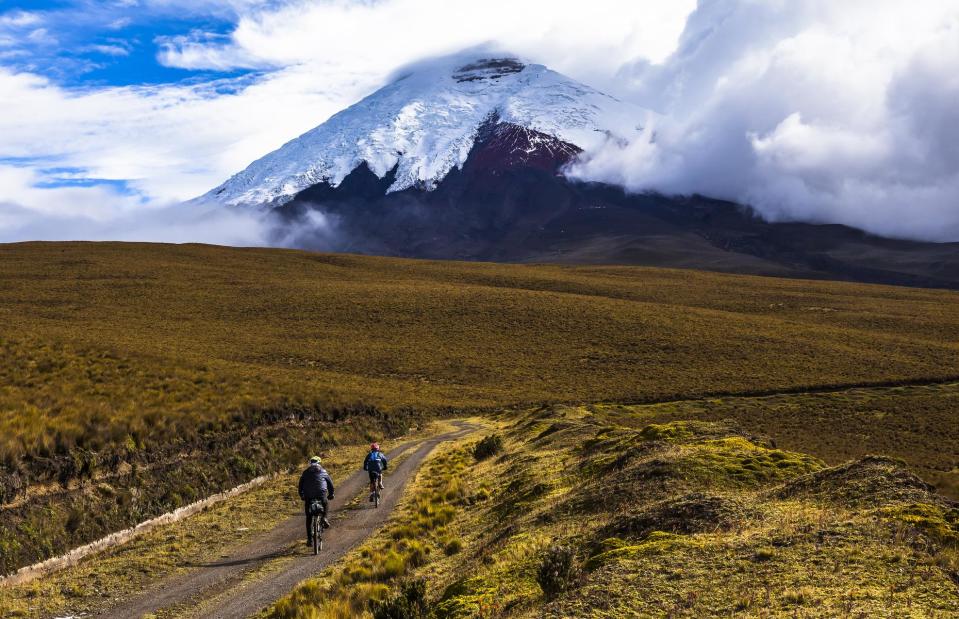
Ecuadorpostales/Shutterstock
The snow cone of Cotopaxi can be seen from as far away as Ecuador’s capital city, Quito, around 35 miles (56km) from the volcano. Mountain bikers can take the steep downhill from the base just below glacier level or bike the trails in Cotopaxi National Park, with the volcano providing a dramatic backdrop. The summit is also now open to climbers, though any ascent requires mountaineering equipment suitable for a glacier climb as well as plenty of time to acclimatise.
Kīlauea, Hawaii, USA
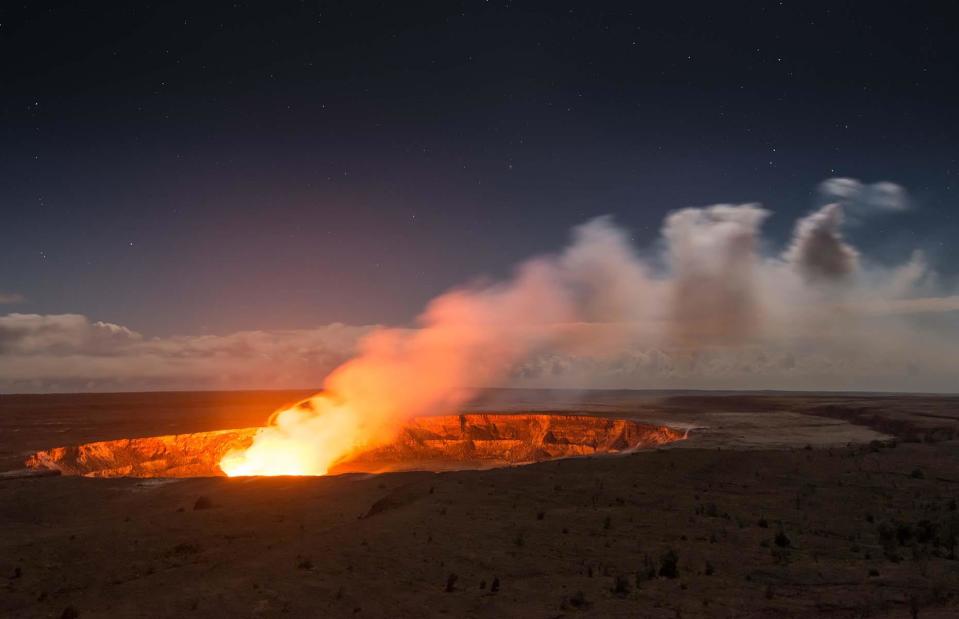
orxy/Shutterstock
Kīlauea, on Hawaii’s Big Island, had been constantly erupting molten lava since 1983 until the eruption was finally declared to have ended on 5 December 2018, following 90 days of inactivity. The name Kīlauea means 'much spreading' or 'spewing' in Hawaiian – a reference to its frequent outpouring of lava that then flows into the ocean. Kīlauea is known as a shield volcano, meaning it has relatively low, gentle slopes formed by lava spreading far from the source.
Kīlauea, Hawaii, USA
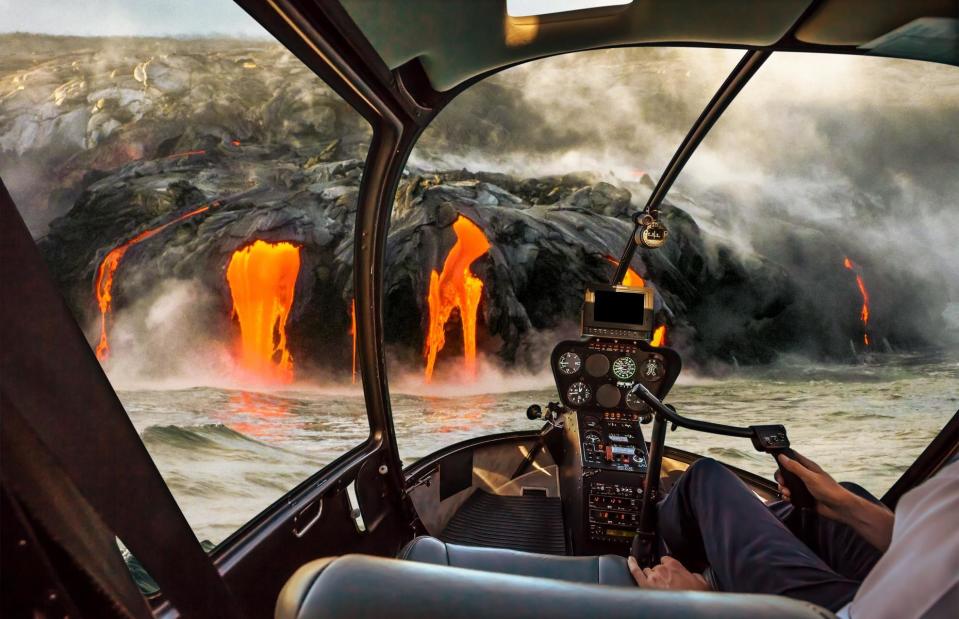
Benny Marty/Shutterstock
The volcano and its bubbling lava fields, located within the Hawai’i Volcanoes National Park, can be seen from helicopter tours or explored independently by looping around the Crater Rim Drive and stopping at a number of signposted trails to viewpoints. The Kīlauea Overlook is the best place from which to admire the caldera, while Kīlauea Iki Overlook has views over a crater that, in 1959, was a lava lake spewing fountains up to 1,900 feet (580m) high.
Mount Teide, Tenerife, Spain
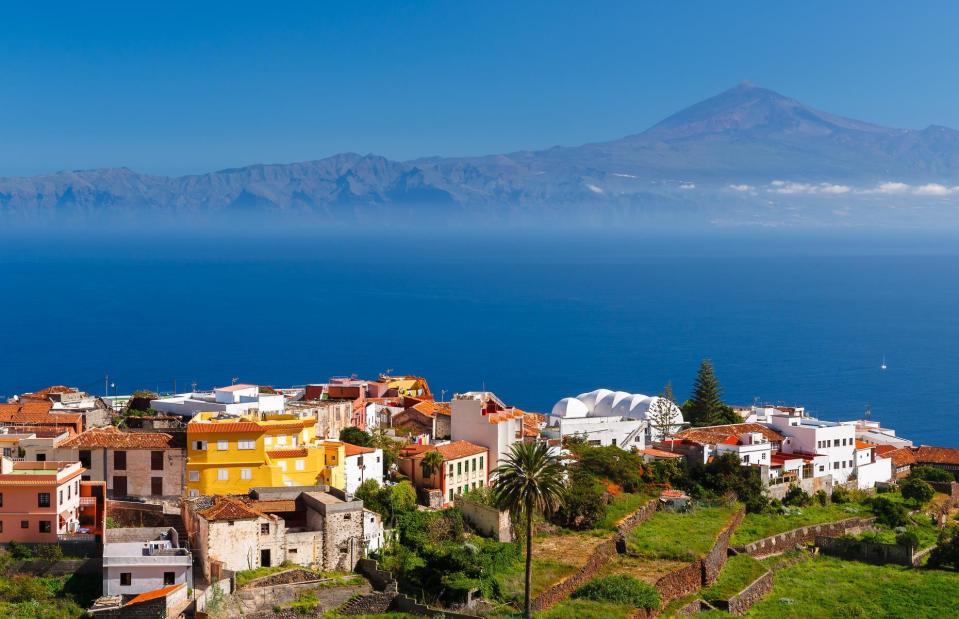
Pawel Kazmierczak/Shutterstock
Mount Teide is one of Europe's most easily accessible volcanoes as it’s located on the island of Tenerife, one of Spain’s Canary Islands. At 12,198 feet (3,718m), Pico del Teide – as it’s known locally – is the highest point on Spanish soil. It’s part of Teide National Park, on the World Heritage List, and looms over an otherworldly landscape of craters and rivers of petrified lava.
Mount Teide, Tenerife, Spain
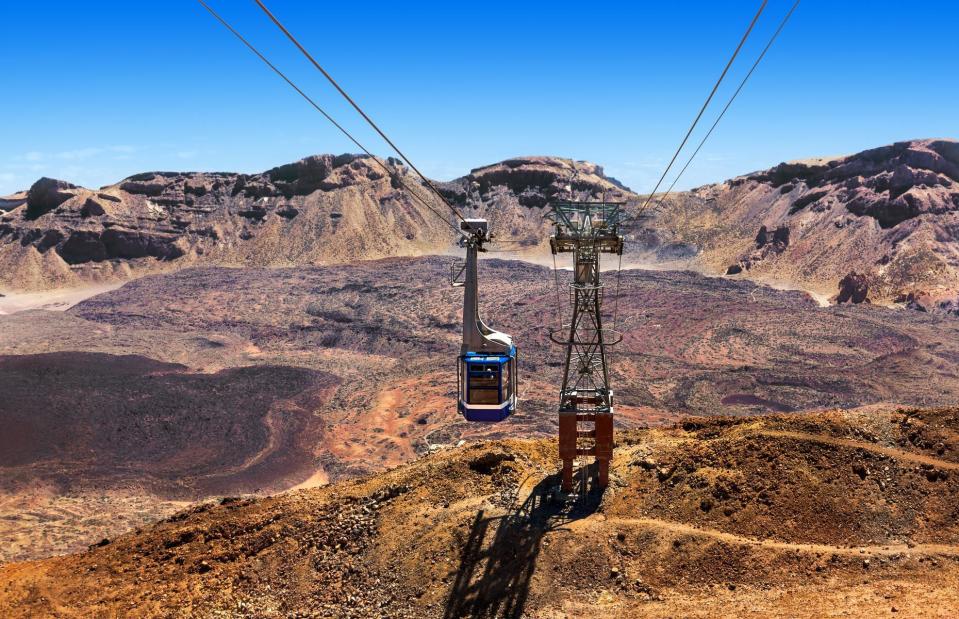
Tatiana Popova/Shutterstock
To visit, you can obtain a free entry permit and take a cable car from the base station, whisking you up to the upper station. Once there, several trails lead to the peak. There was a seismic swarm – a series of mini earthquakes – in 2016 and 2017 and, though low level seismic activity is considered normal, some experts believe an eruption could represent a significant threat.
Mount Pelée, Martinique
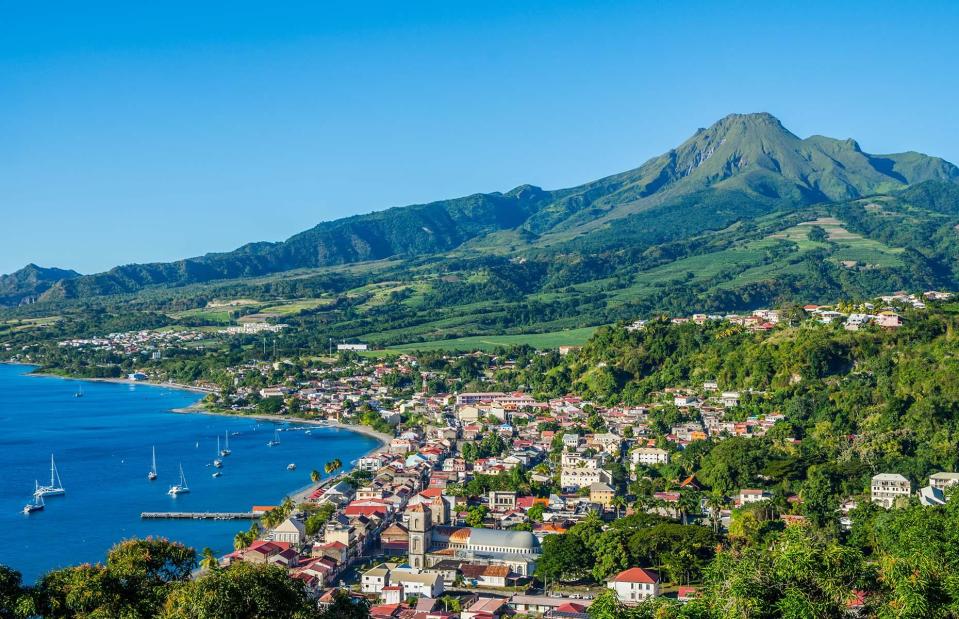
Damien VERRIER/Shutterstock
The name Pelée means ‘bald’ in French, though this velvet green volcano looks anything but when viewed from a distance. The volcano, on the Caribbean island of Martinique, also looks deceptively peaceful. An eruption in 1902 destroyed the port of Saint-Pierre, killing an estimated 30,000 people – 15% of the Martinique’s population at the time. Since the devastating event, the mountain’s name is used to describe the specific type of eruption.
Mount Pelée, Martinique
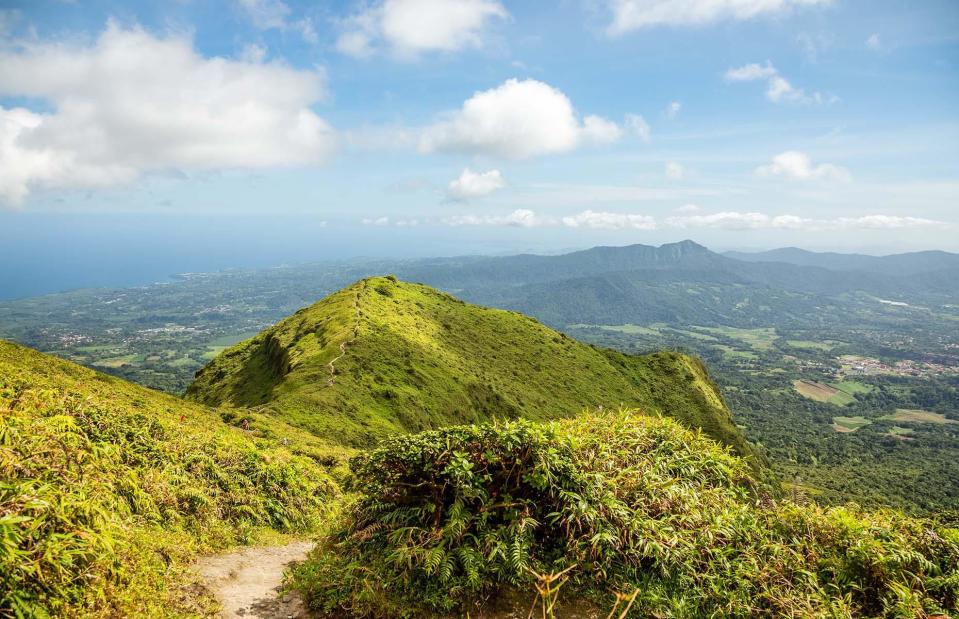
Vadim Nefedoff/Shutterstock
Saint-Pierre was never fully rebuilt, though a few villages have sprung up in its place. Mount Pelée hasn’t erupted since 1932 but is still considered active. It’s the highest peak in Martinique at 4,583 feet (1,397m), with several trails around the slopes and up to the top. On clear days, the views of the bay and its black volcanic sands are phenomenal.
Mount Yasur, Vanuatu
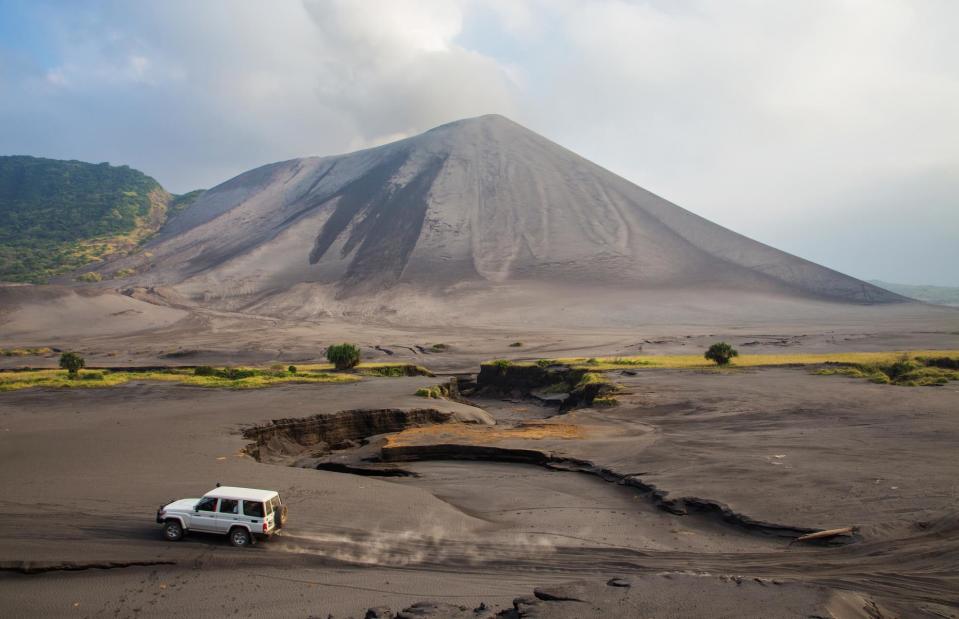
StanislavBeloglazov/Shutterstock
Mount Yasur is probably the best-known volcano in Vanuatu, the island archipelago nation in the South Pacific. This dramatic beauty is found on the equally beautiful Tanna Island, and must be one of the easiest volcanoes to summit: the trail from the car park only takes about 10 minutes on foot. However, to preserve the nature surrounding the volcano, travellers must enter via a visitor centre and take a bumpy ride through the jungle in a pick-up truck to reach the start of the trail.
Mount Yasur, Vanuatu
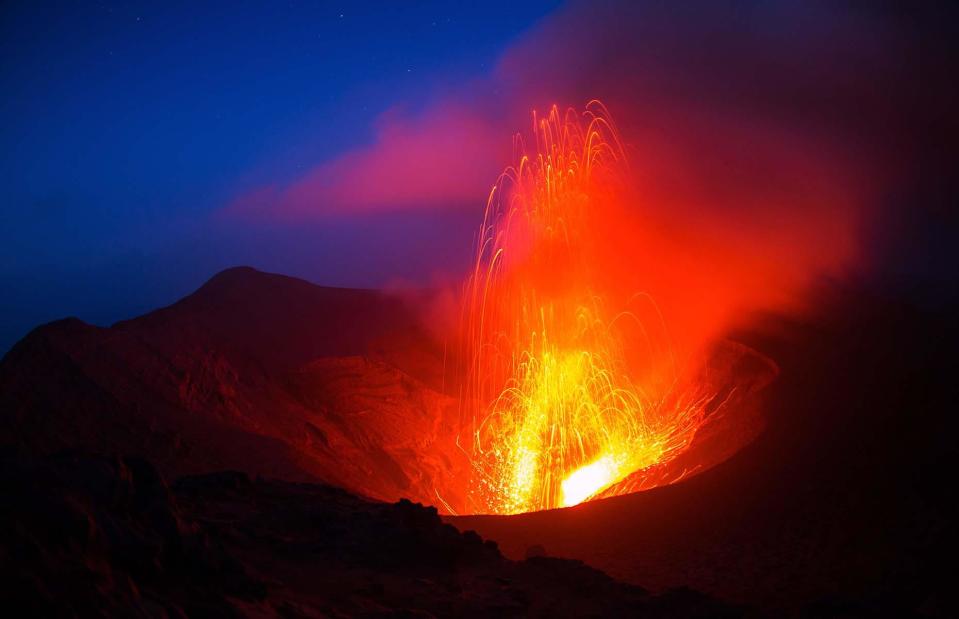
StanislavBeloglazov/Shutterstock
Said to have been constantly bubbling and smoking for more than 800 years, even attracting Captain James Cook with its glow, the summit can still be a dangerous place as the volcano is known for shooting burning debris high into the air. Legend has it that the man-god John Frum lives inside the mountain, where he is biding his time and waiting to be reborn.
Mount St Helens, Washington, USA
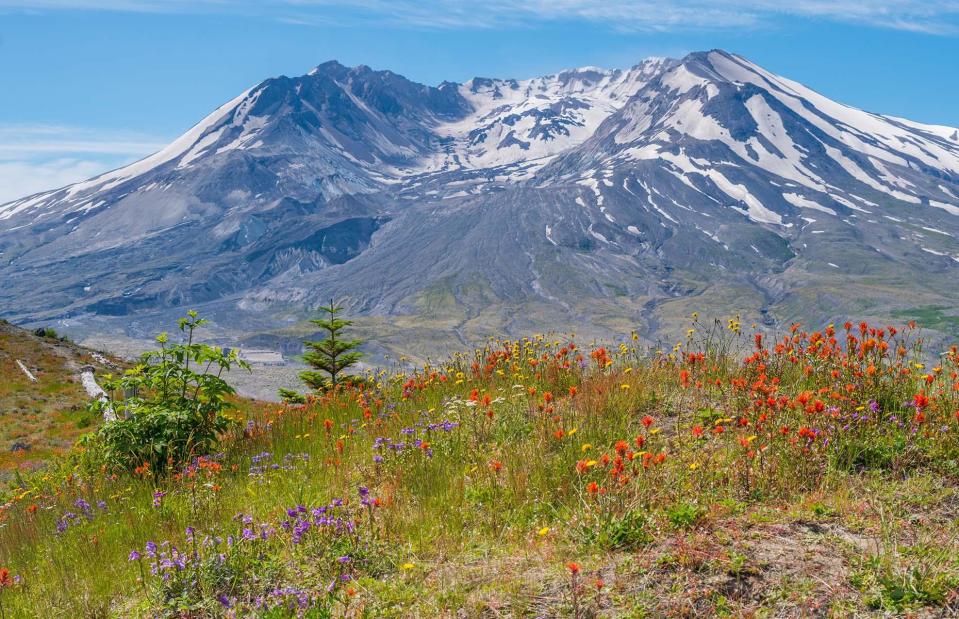
Roman Khomlyak/Shutterstock
In the Cascade Range in Washington State, Mount St Helens is infamous for its 1980 eruption, in which 57 people lost their lives. It had previously been dormant for 123 years. The Mount St Helens National Volcanic Monument was created to preserve the volcano and constantly monitor it for unusual seismic activity.
Mount St Helens, Washington, USA
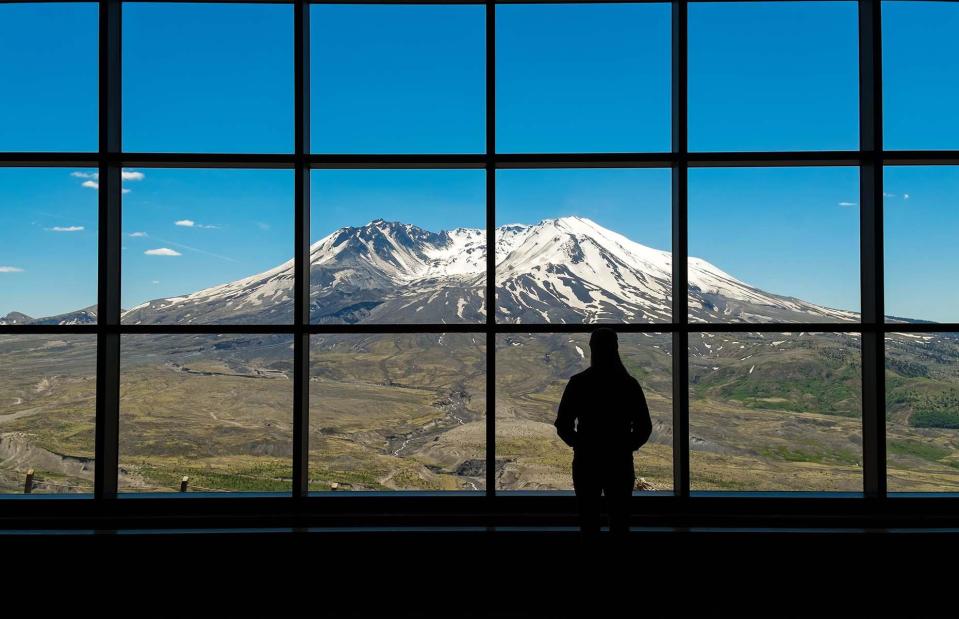
CrackerClips Stock Media/Shutterstock
The viewing deck at Johnston Ridge Observatory is the best place for a magnificent view of Mount St Helens’ crater, as well as the lava dome and the blast zone. The short eruption trail from here has information and eyewitness accounts from the fateful eruption on 18 May 1980.
Mount Bromo, Indonesia
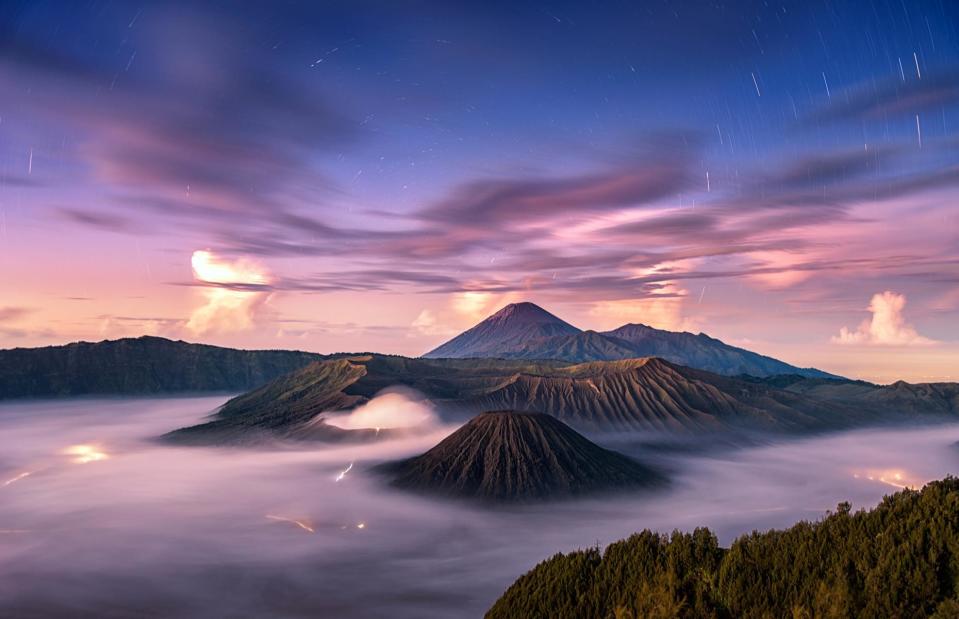
ToppyBaker/Shutterstock
The Indonesian province of East Java is known for volcanoes, located within the so-called ‘Ring of Fire’ – a seismically active belt infamous for earthquakes and eruptions. Mount Bromo isn't the tallest, at 7,641 feet (2,392m). But its striking backdrop of the Tengger Massif, within Bromo Tengger Semeru National Park, has made it one of the most famous – and most photographed. Bromo has particular significance for the Tengger people due to a legend that a brave prince sacrificed his life here for his family.
Mount Bromo, Indonesia
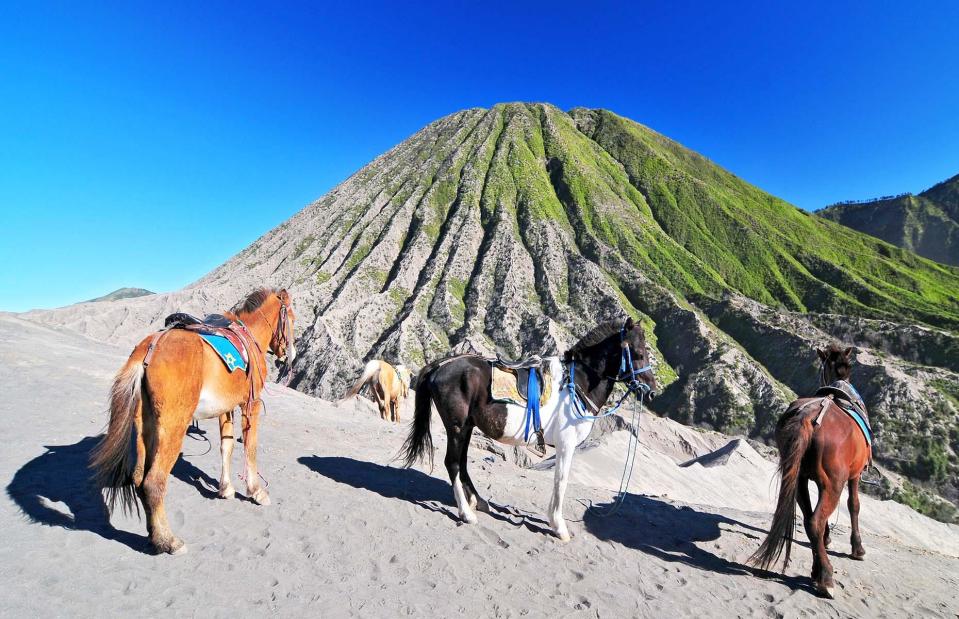
Cezary Wojtkowski/Shutterstock
It’s particularly lovely at sunrise, when people often come to a vantage point on Mount Penanjakan to watch the first rays hit Bromo. There are also tours to get closer to the crater, by foot, bike or on horseback, though the volcano is considered active and last erupted in July 2019. Nearby Mount Semeru, Java’s highest mountain at 12,060 feet (3,676m), erupted in December 2021, killing at least 13 people.
Mount Etna, Italy
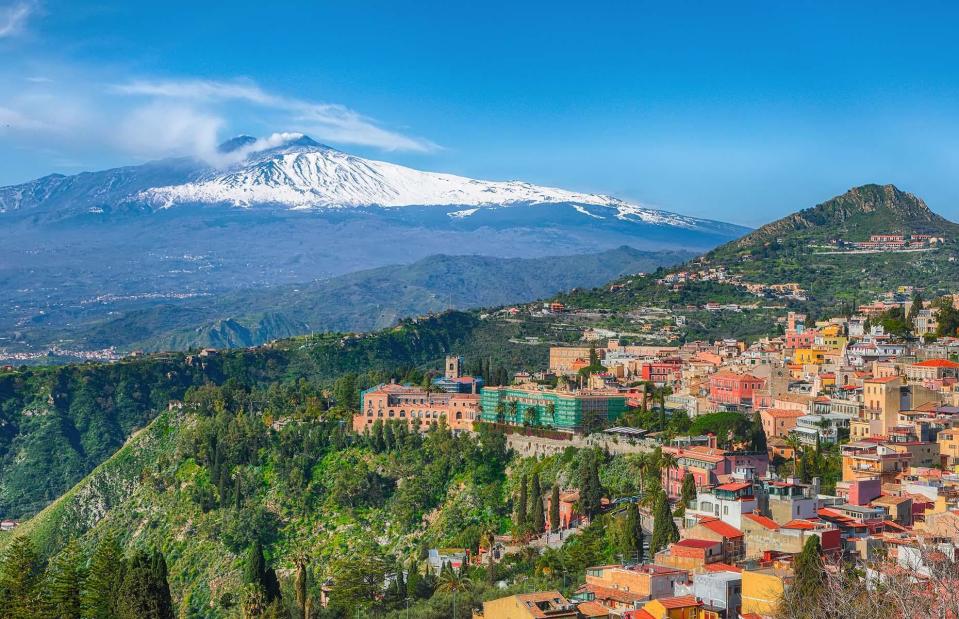
Vadym Lavra/Shutterstock
Reaching an elevation of 10,900 feet (3,320m), Mount Etna is the highest active volcano in Europe. It’s also one of the most famous and most magnificent landmarks in Sicily, dominating the island's east coast. It has a significant footprint, covering an area of around 600 square miles (1,600sq km), though its height and shape have regularly shifted due to eruptions. And, as it’s believed to have been active for around 2.6 million years, there have been many.
Mount Etna, Italy
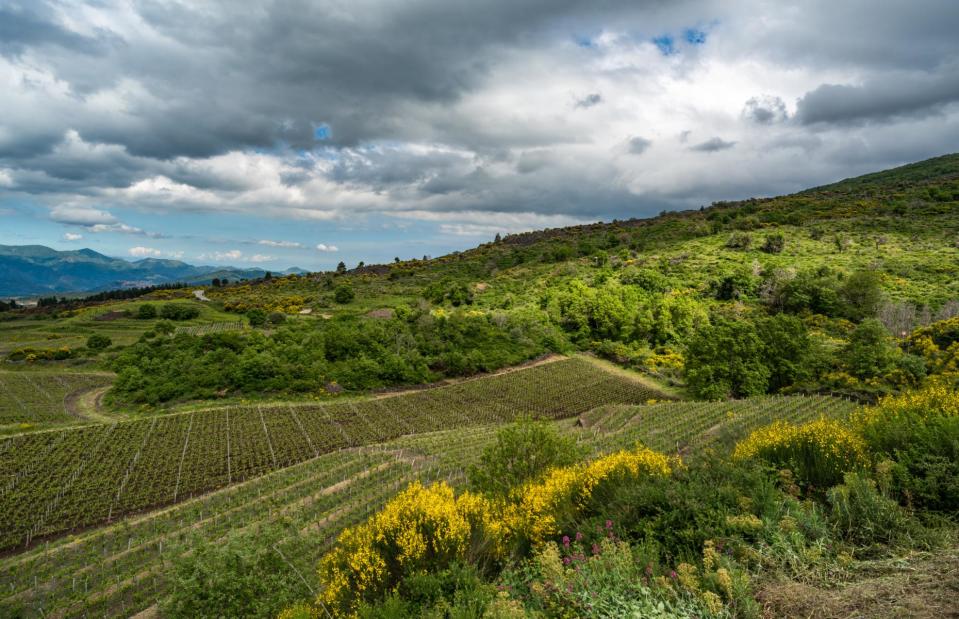
javarman/Shutterstock
The most significant was in 1669, when a violent lava flow destroyed a dozen villages and covered the western part of Catania. There are three observatories located on its slopes and, perhaps of more interest to visitors, several wineries taking advantage of the rich and diverse soils in the lower zone. Etna is sometimes closed for safety reasons but, when it is considered safe to visit, you can hike or take a 20-minute cable car up the south side of the mountain.
Krakatau, Indonesia
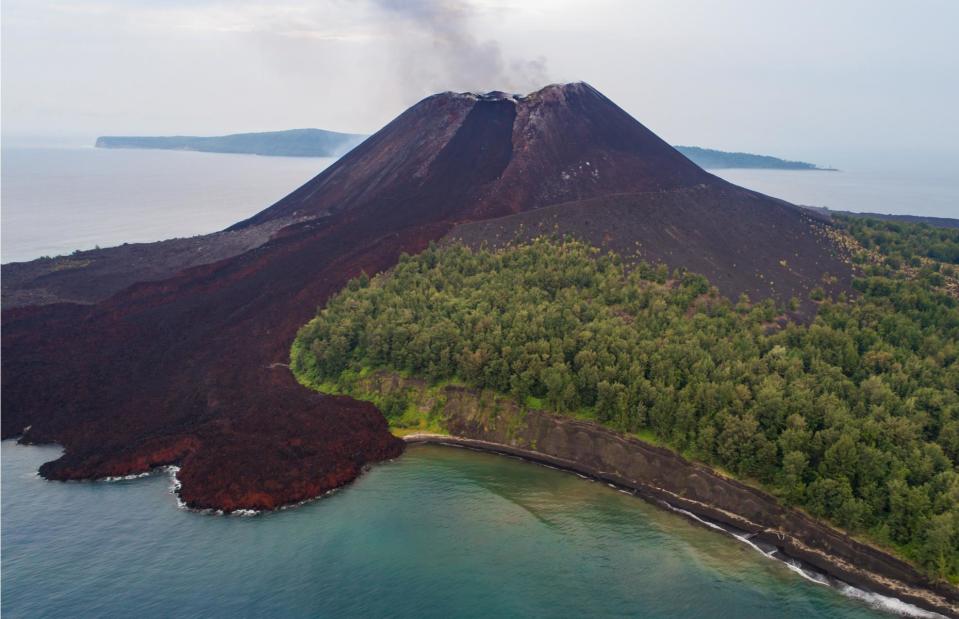
The Wild Eyed/Shutterstock
Krakatau or Krakatoa, a group of volcanic islands between Java and Sumatra, has looked rather different through its long history. At one point the original volcano reached around 6,000 feet (1,800m) above sea level, growing into a cone-shaped mountain with layers of volcanic rock, cinder and ash. Sometime around the AD 5th century, the top collapsed and formed a caldera with four small volcanic islands. Its most famous eruption was in 1883, with explosions that could be heard in Australia – around 2,200 miles (3,500km) away.
Krakatau, Indonesia
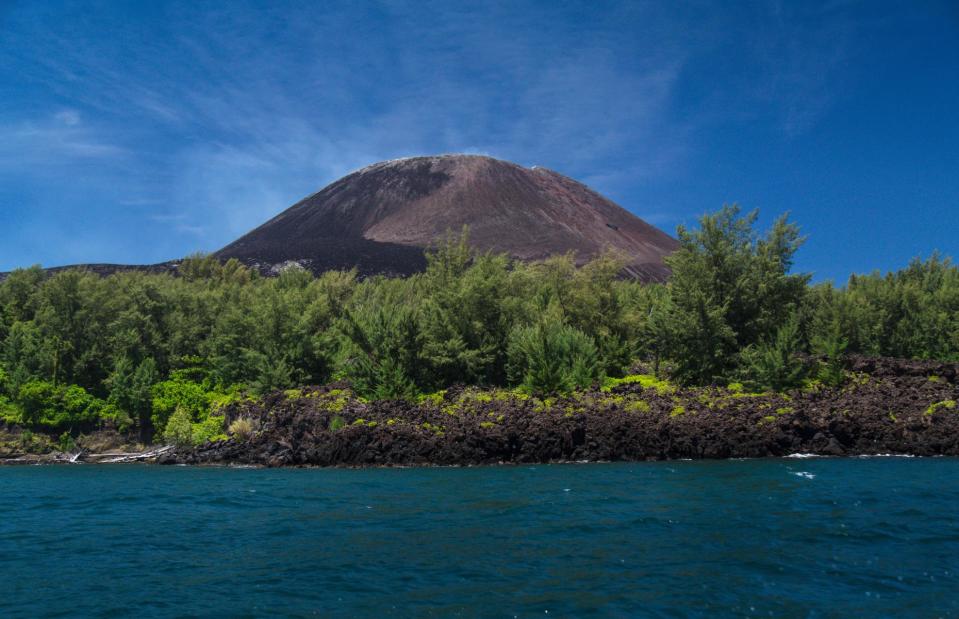
Deni_Sugandi/Shutterstock
Though the volcano was uninhabited, its collapse beneath the water triggered a series of tsunamis that killed around 36,000 people in nearby Java and Sumatra. It erupted from the seafloor in 1928, forming an island known as Anak Krakatau or ‘Child of Krakatoa’ (pictured), and sporadic activity since has seen the volcano grow once again to around 1,000 feet (330m) above sea level. The volcanic islands are part of Ujung Kulon National Park, and people can usually visit on tours.
Arenal Volcano, Costa Rica
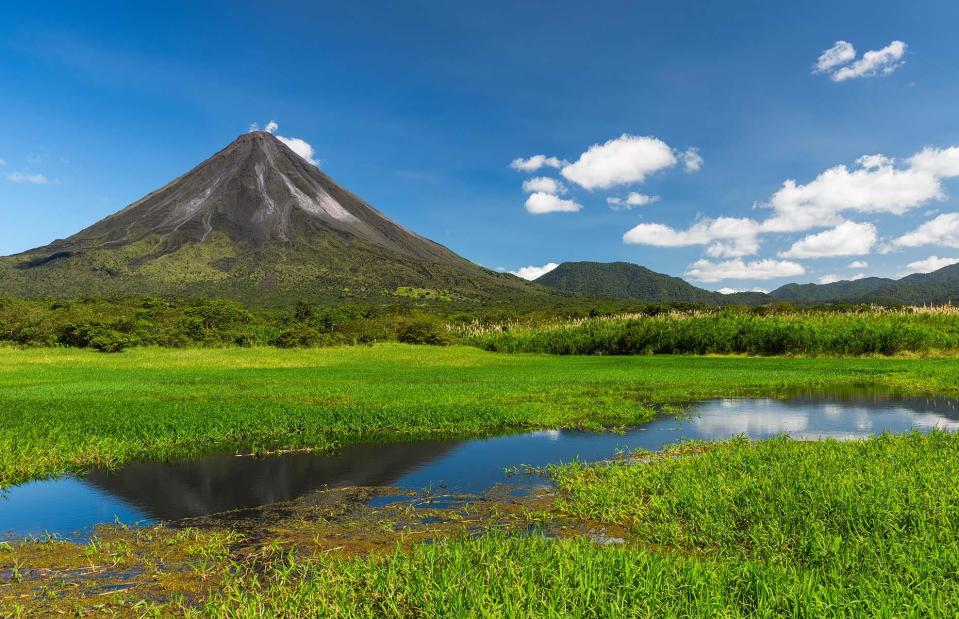
Maricel Quesada/Shutterstock
Arenal Volcano seems to be everywhere when you’re travelling through Costa Rica’s lush lowlands. Situated within a national park, its perfectly symmetrical cone is a constant presence, visible from the area’s lava fields and forests, and even from many of the hotels here. The park is home to another volcano, Chato, whose collapsed crater is now a lagoon. Arenal, however, is the more dominant of the two at 5,357 feet (1,633m) tall – and is known as the country’s most active volcano.
Arenal Volcano, Costa Rica
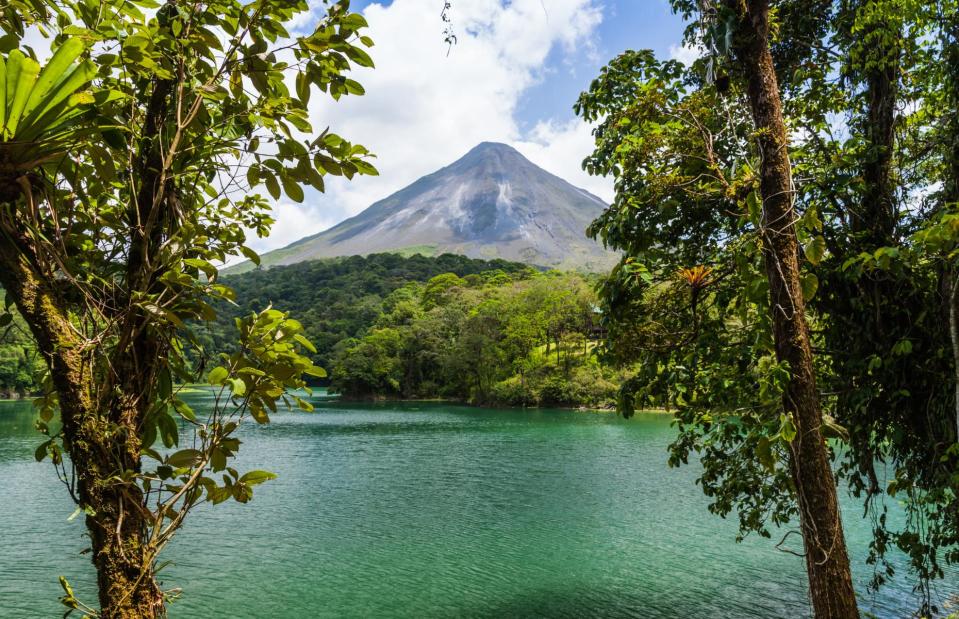
Parkol/Shutterstock
Dormant for hundreds of years, Arenal erupted in 1968, devastating nearby towns villages and killing 87 people. Between then and 2010 Arenal rumbled on, regularly spewing smoke, ash and lava, though it’s since said to be in a ‘resting phase’. Visitors can follow trails around Arenal and to areas with clear views of the cone, though it’s not permitted to hike to the top.
Mount Kilimanjaro, Tanzania
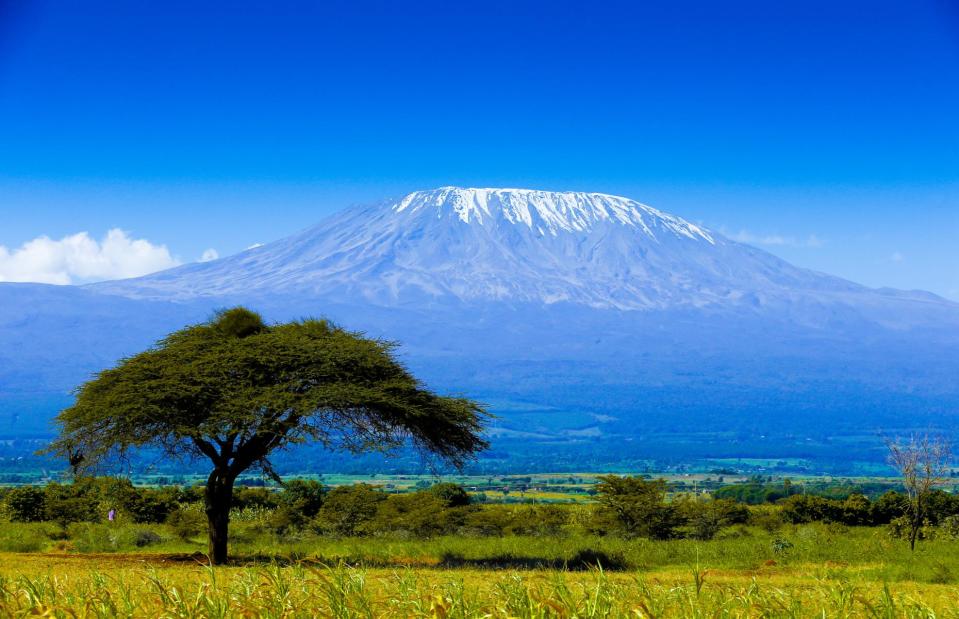
Andrzej Kubik/Shutterstock
Kilimanjaro might well be the most famous on our list – though it’s not usually known as a volcano. It is, in fact, a stratovolcano, meaning a huge volcano that’s built up of ash, lava and rock. Africa’s tallest mountain and, looming at 19,340 feet (5,895m), the largest in the world that isn’t part of a range, Kilimanjaro is made up of three cones including Kibo, which forms the summit.
Mount Kilimanjaro, Tanzania
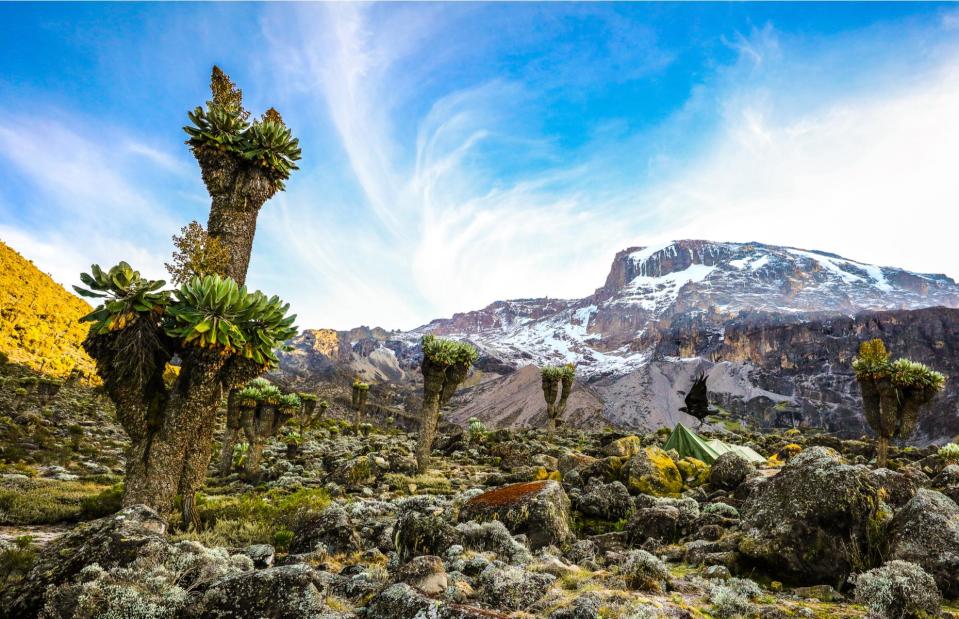
JMx Images/Shutterstock
Its highest point is also known as Uhuru, or ‘freedom’ in Swahili. And, while its fellow cones Mawenzi and Shira are extinct, Kibo is dormant – meaning it could possibly erupt again. It’s estimated that it last spewed out lava around 360,000 years ago so hiking on and attempting to summit the mountain continue to be hugely popular tourist activities. The mountain, together with the wildlife-rich forests that surround it, are protected as part of Kilimanjaro National Park.
Now discover the marvellous mountains you can climb in one day


